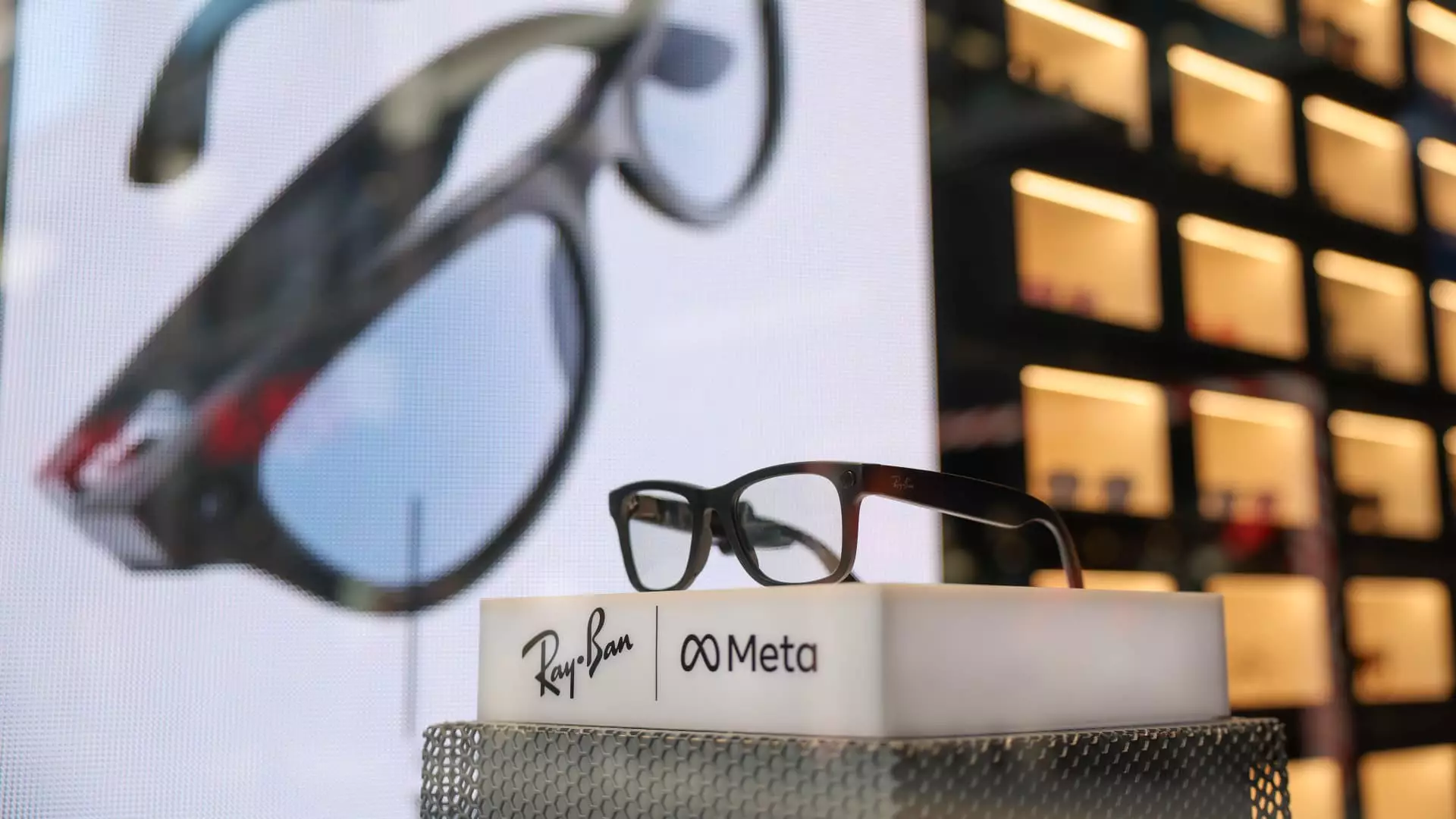The world of consumer technology is evolving rapidly, and one of the most promising segments currently emerging is that of smart glasses. As we delve into the fall product season, companies are unveiling more sophisticated yet accessible smart glasses that present an exciting alternative to mainstream virtual reality headsets, such as Apple’s hefty Vision Pro. This shift suggests a burgeoning market becoming increasingly relevant for both tech enthusiasts and everyday users.
Several tech giants are entering the fray, notably Snap, which recently introduced augmented reality glasses, and Meta, which is anticipated to showcase its offerings at the forthcoming event on September 25. This wave of innovation is spearheaded by Meta’s Ray-Ban Meta Smart Glasses, whose popularity is evidenced by significant sales figures. In the first half of 2023 alone, the second generation of these smart glasses achieved over 1 million units sold, a substantial leap from the 300,000 units achieved by the first generation from September 2021 to early 2023. This marked increase showcases consumer interest and potential acceptance of smart glasses as everyday tech items.
The meteoric rise in sales of Ray-Ban Meta Smart Glasses raises questions about the broader acceptance of similar devices. Historically, wearables like Google Glass faced hurdles to mainstream acceptance, often relegated to niche markets. However, HSBC’s technology hardware analyst, Frank He, posits that the adoption curve may soon ascend due to a proliferation of artificial intelligence (AI) capabilities inherent in upcoming smart glasses.
These advancements signal not just a leap in technology but a crucial cultural shift in how society interacts with wearable tech. Tools like AI assistants could be pivotal in reshaping consumer behavior, allowing users to take full advantage of augmented reality experiences seamlessly integrated into their daily lives.
Companies like Sunny Optical are positioned to benefit significantly from this growing trend. Based in China, Sunny Optical has expertise in optics necessary for wearables and is already predicting substantial demand increases for smart glasses. The company’s projections suggest that it could ship 2 million units of smart glasses’ components in 2024, potentially reaching 5 million by 2025. Such growth, combined with a projected content value of $8 to $10 per unit, places Sunny Optical at the center of this burgeoning industry.
Despite a strong position, Sunny Optical operates in a highly competitive landscape, particularly regarding smartphones and automotive technologies. Analysts from CMB International have noted impressive revenue growth attributed to robust sales in Europe and the U.S., underscoring the significant role that partnerships with major corporations like Apple and Meta have played in its success.
HSBC’s optimism regarding Sunny Optical is visible in its upgraded investment rating, reflecting confidence in the firm’s ability to adapt to market needs. Yet, challenges loom on the horizon. JPMorgan, while recognizing the uptick in sales, has chosen a more cautious stance, maintaining a ‘Neutral’ rating in light of the pressure from competitors and slower growth rates in select sectors.
As companies like Sunny Optical gear up for anticipated growth, the forecast sector-wide remains mixed. While some firms experience strong traction, others may lag due to an over-saturated market and high competition. The tech industry invariably ebbs and flows—trends that once seemed promising can quickly shift, making continued innovation and responsiveness to consumer demands essential for survival.
Despite the uncertainties, the outlook for smart glasses appears promising. As manufacturers refine designs and incorporate cutting-edge technology, the possibilities for consumer integration into everyday life are vast. Individuals seeking a blend of functionality and style, as offered by brands like Ray-Ban, may set the stage for a new era—where smart glasses become not just an innovative gadget, but an essential part of modern identity.
As we stand at the threshold of what could be a groundbreaking evolution in how technology integrates into our lives, the companies willing to embrace change, underscore quality, and cultivate genuine user connections will likely thrive. Smart glasses may well be the next frontier, blending seamlessly into the fabric of daily routines, forging pathways for deeper human-technology interaction in the years to come.

